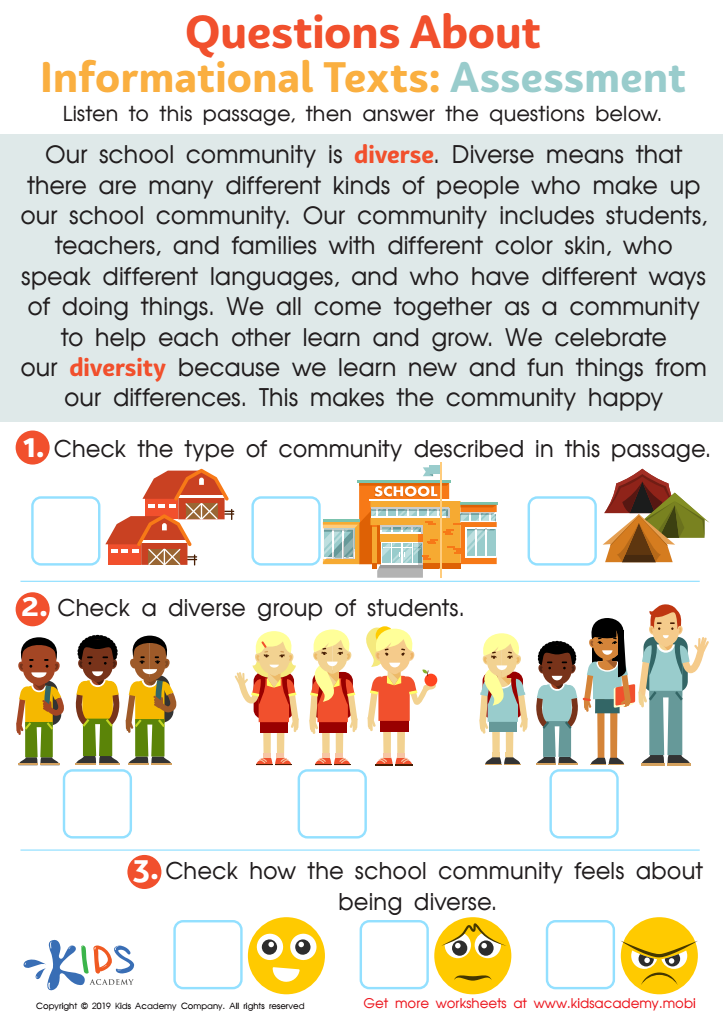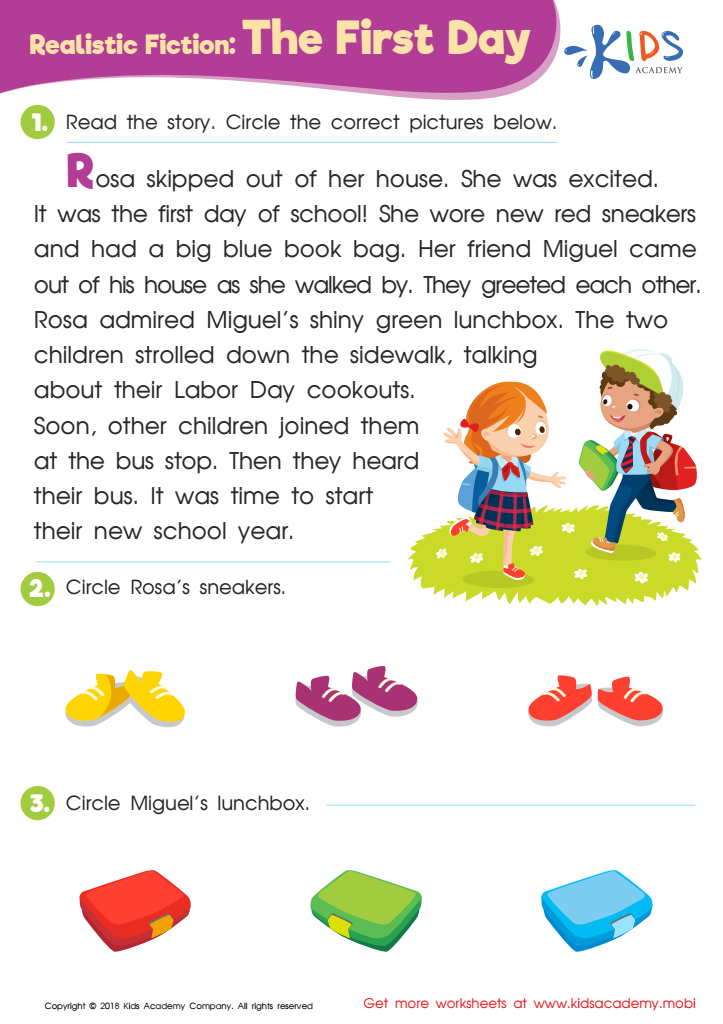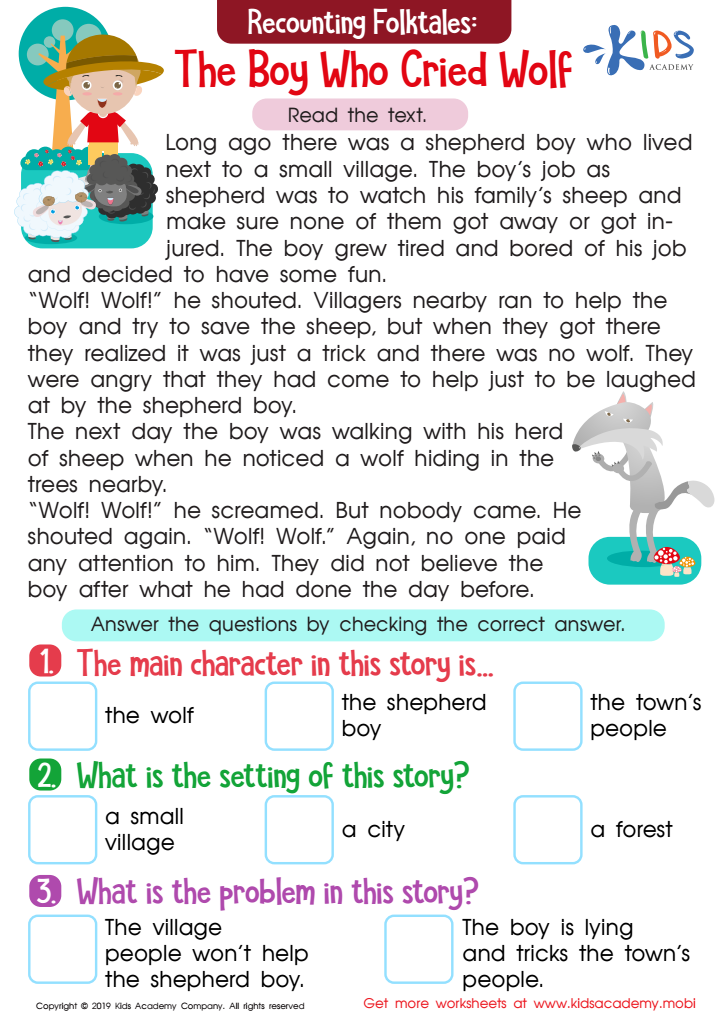Text analysis Normal Worksheets for Ages 4-9
3 filtered results
-
From - To
Our "Text Analysis Normal Worksheets for Ages 4-9" provide a focused approach to developing critical reading and comprehension skills in young learners. Each worksheet is designed to engage children with age-appropriate texts, enhancing their ability to identify main ideas, details, sequences, and inferences. With fun and interactive exercises, kids will build a strong foundation in text analysis, fostering a love for reading and improving their overall academic performance. Ideal for both classroom settings and at-home practice, these worksheets offer diverse activities to captivate and challenge young minds, making learning enjoyable and effective. Explore our selection today to support your child's literacy journey!


Questions About Informational Texts: Assessment 1 Worksheet


Realistic Fiction: The First Day Worksheet


The Boy Who Cried Wolf Part 1 Worksheet
Text analysis normal for children ages 4-9 refers to understanding what is considered developmentally appropriate in their reading and comprehension skills. Parents and teachers should care about this for several critical reasons.
Firstly, it helps in gauging whether a child is progressing typically in acquiring basic literacy skills. Early literacy lays the foundation for later academic success, influencing a child's ability to understand more complex subjects.
Secondly, being aware of normal text analysis abilities helps in identifying any potential learning difficulties early on. Early identification means that interventions can be introduced sooner, thereby preventing future academic struggles.
Thirdly, understanding text analysis at this age helps in choosing age-appropriate reading materials. Simple texts with repetitive phrases, familiar vocabulary, and pictorial cues encourage engagement and bolster confidence in young readers. As children gradually understand the main ideas, recall details, and infer basic information, these skills nourish a lifelong love for reading.
Lastly, monitoring text analysis capabilities encourages tailored teaching methods. Teachers can design activities that align with children's comprehension levels, making learning enjoyable and effective. Parents, on the other hand, can support this through interactive reading at home, asking questions about the story, and fostering a balanced reading routine.
In summary, caring about text analysis norms for ages 4-9 ensures targeted support, aligns learning materials with children's needs, and fosters a robust foundation in literacy.
 Assign to My Students
Assign to My Students




















